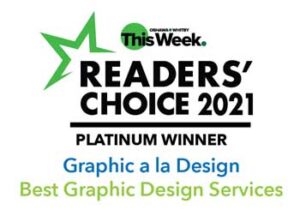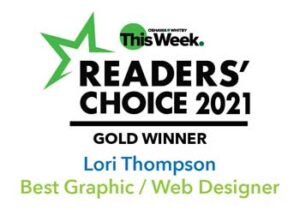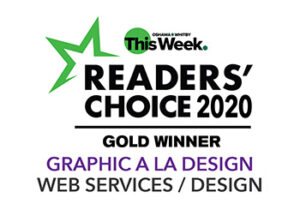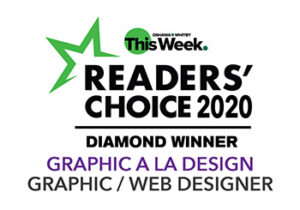Graphic Design — The Secret Recipe Revealed
So: You need graphic design work. You may find yourself thinking, “Can I do the work myself? Or can my secretary or computer savvy friend help me out? What does a graphic designer do that I can’t do?
What does a graphic designer do anyway?”
According to Wikipedia, a graphic designer is a professional within the graphic design and graphic arts industry who assembles together images, typography, or motion graphics to create a piece of design.
But Wikipedia’s definition misses crucial characteristics that are required of a graphic designer. They understand how to piece together elements to create something that not only catches the eye, but conveys a message.

Trained, experienced and professional graphic designers are visual communicators. We understand the application that makes design more successful, we understand human behaviour — psychology is the science of behaviour and the mind. Understanding cognitive behaviour can affect design tremendously. Simply put, we are given a problem, then collect information and analyze the best solution possible. We understand how to take that solution and translate it to a visual that represents the client’s wants and desires — and going beyond that to take into consideration with how it will relate to consumers.
Many customers, apprentices and designers who have worked with me before have heard me speak about ‘The Recipe.” My students have heard me talk about it a time or two (or a hundred) as well, because I believe it is an important lesson that can be used long after they leave the classroom.
Just like grandma’s famous chocolate chip recipe, this is one you will want to pass onto generations. In graphic design, like baking, everything needs to be balanced and measurements need to be exact or else you get a sloppy, unappealing mess. “The Recipe” includes the proper measures of a text — a strong, well written message —, colour, typography, shape, line, space, value, texture, golden ratio, the rule of thirds and perspective (to name a few).
Yes, perspective; especially if it’s one-dimensional.
Like homebakers that can look into their pantry and make a delicious dessert using whatever is inside, graphic designers can literally take any idea or concept and communicate it into a full out campaign or simple branded message. We often take notes at a meeting or text from a MS Word document and transform it into an original design.
Yet, still, you ask: what makes us different from you or your savvy computer friend?
I understand, it’s tempting: Do-It-Yourself design solutions have exploded on the scene, but without the expert know-how and the eye of a graphic designer, they just don’t work. Hiring a professional graphic designer ensures up-to-date, consolidated work practices, including legal requirements, accessible design, consumer trends, research methodologies and production processes. Chances are, that DIY program is going to use a lot of unheard jargon and not worry about the differing legal requirements in any given province. They also rely heavily on stock tools, from brushes to textures to images, which can result in your company having very similar branding to another entity.
Professional graphic designers know how to produce that informative impression and avoid misunderstandings — after all, every brand can only make that first impression once. Poorly designed graphics, hard-to-navigate websites, or inconsistent text can negatively impact potential customers and leave both customers and employees with a headache.
Once more you ask, what does a graphic designer do? They help you create something that will represent your company, represent your brand, but most of all, attract customers — and it will look more than just look good.
Lori Thompson, Creative Director
Graphic a la Design
graphicaladesign.com




















